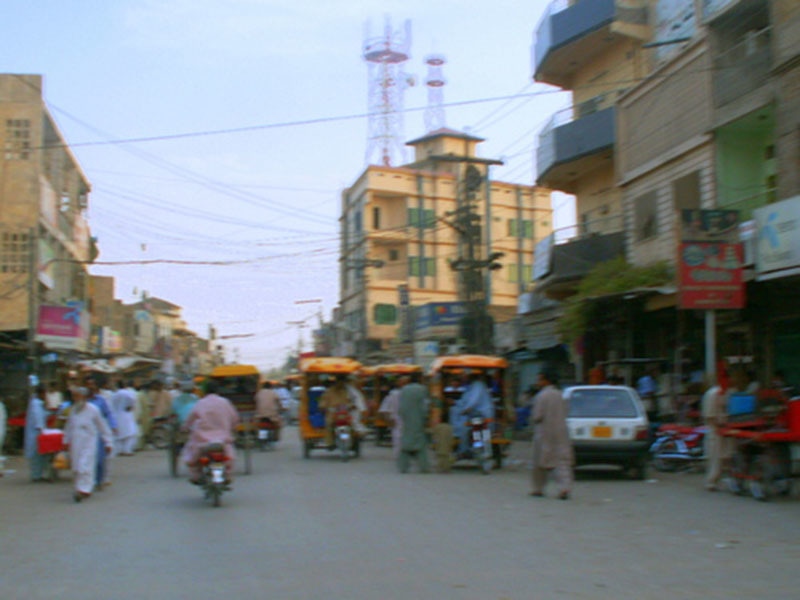
In 1983, a movement against the Ziaul Haq dictatorship began to spiral out of control and threatened a full-scale civil war in the Sindh province.
Dozens of civilians were killed, hundreds arrested and many escaped into the thick forests near the cities of Dadu and Moro to (eventually) become dacoits.
A movement that had begun as a nationwide anti-Zia agitation, mutated into becoming a civil war of sorts between Sindhi nationalists and the state. The movement was eventually crushed with the help of the army.
One of the most intriguing characters of the movement was a middle-aged Sindhi man reportedly belonging to a small Maoist party, the Awami Tehreek.
His sudden claim to fame had to do with just one act of his: In September 1983, he had jumped in front of an armored limousine in which Zia was travelling (in Dadu), lift the dhoti he was wearing, and flashed his privates for the dictator to see, all the while shouting (in Sindhi), 'bhali karey aya, bhali karey aya' (‘welcome, welcome’).
He was arrested and never seen or heard from again.
The following narrative was weaved from one of the most detailed papers on the 1983 MRD Movement (written by Amir Ali, Mughal Ahmad and Fauzia Naseem for Berkeley Journal of Social Sciences); and an insightful paper authored by eminent political scientist, Khalid B. Sayeed, Pakistan in 1983: Internal Stresses More Serious than External Problems (University of California, 1984); and dispatches from BBC’s South Asian correspondents who regularly reported from the movement’s hotspots in the interior of Sindh.
Making the move
Though protests against the Ziaul Haq dictatorship had begun almost immediately after his military coup in July 1977, his regime’s harsh measures against any and all opposition did not allow opposition groups to organise themselves in a more coherent and systematic manner.
The beginning of the anti-Soviet insurgency in Afghanistan in early 1980 had meant that the Zia regime was poised to attract recognition from the United States, and become its vessel to carry the large military and financial aid that the US and Saudi Arabia pledged as a way to back Afghan insurgents in Afghanistan. But it would take another few years for Zia to use this patronage to strengthen his position.
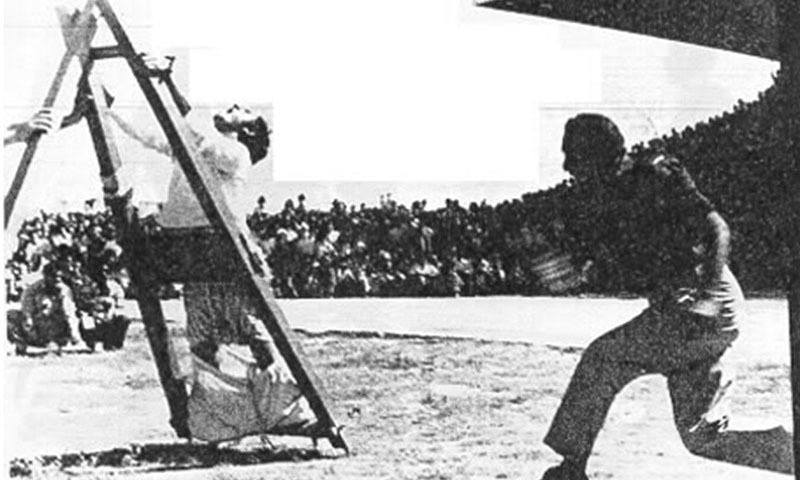
The Movement for the Restoration of Democracy (MRD) was formed in 1981. It was a multiparty alliance initiated by the left-leaning Pakistan People’s Party (PPP), which, at the time, was being led by former Prime Minister ZA Bhutto’s widow, Begum Nusrat Bhutto, and her then 28-year-old daughter, Benazir Bhutto. Both had been in and out of jails ever since ZA Bhutto was executed through a controversial trial in April 1979.
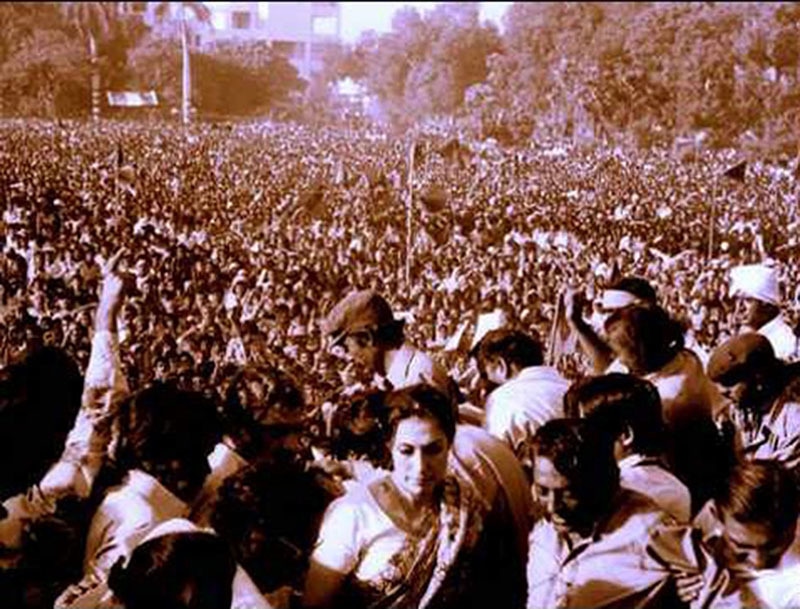
The MRD included the centre-left PPP; the center-left Pakistan National Party; the far-left Awami Tehreek; the far-left Qaumi Mahaz-i-Azadi; the far-left Muzdoor Kissan Party; the centre-left National Democratic Party; the centrist Tehreek-i-Istaqlal; the centre-right Pakistan Democratic Party; the centrist Muslim League (Malik Qasim faction); and the right-wing Jamiat Ulema Islam, which was the only mainstream religious party that was opposing Zia.
Though the movement kicked off in early 1981, it took another two years for MRD to gather a more substantial momentum against Zia’s dictatorship.
But by 1983, Zia had consolidated his political position and revived the economy. Yet, this revival, which was largely built upon the substantial flow of US and Saudi aid that had begun to arrive, brought with it a new kind of institutional corruption and the initial emergence of thorny factors such as heroin/gun smuggling, and the mainstreaming of radical clerics who were propped up by the state to recruit and indoctrinate young Pakistanis and Afghans for the insurgency against Soviet forces in Kabul.

The battle for Punjab
The country’s largest and most populated province, Punjab, was a bastion of the PPP ever since the late 1960s. The party, though led by a Sindhi (ZA Bhutto), had swept the election in the province in the 1970 election and then again in the (latter annulled) 1977 election.
To dent the PPP’s support base in Punjab, Zia (an immigrant Punjabi), began to overtly patronise those sections of the province that had been adversely affected by the Bhutto regime’s haphazard ‘socialist’ policies. Such sections included prominent business groups of the province.
Zia’s economic policies were also designed to attract the support of Punjab’s urban middle and lower-middle-class traders and shopkeepers (or those urban sections of the province who had overwhelmingly voted for ZA Bhutto’s PPP in the 1970 election).
Zia then gradually aligned these sections with certain radical religious outfits that he had begun to foster. Thus, an economic revival witnessed during the Zia regime was accompanied by a burst of religiosity within Punjab’s bourgeoisie and petty-bourgeoisie.
The MRD leadership reacted to this by deducing that the fruits of the economic revival witnessed (after 1980) were mostly falling in the hands of central/urban Punjab’s industrialist and business communities and the trader classes; whereas rest of the country (as well as working-class and rural Punjabis) were being ravaged by economic exploitation, the rising rates of crime and corruption, and the growing incidents of sectarian violence.
On August 14, 1983 (one year after Zia had gotten himself elected as ‘President’ through a dubious referendum), the MRD launched a movement against him.
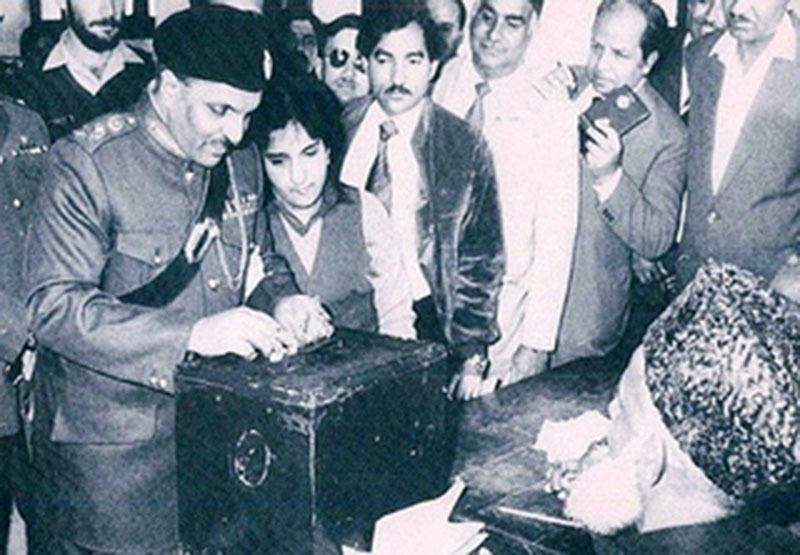
Though the movement kicked-off simultaneously in Sindh and the Punjab, it failed to gather much support in the latter province. Soon, it became restricted to Sindh, where at one point, it treateningly began to look like it would turn into a full-blown Sindhi nationalist movement and even a civil war.
MRD activists and youth belonging to the student-wings of MRD parties and various left-wing Sindhi nationalist groups plunged into the fray and disrupted everyday life in Sindh. Sindh’s metropolitan capital, Karachi too, witnessed widespread protests by journalist, student and women’s organisations, but compared to the rest of the province, Karachi remained relatively unruffled.
In the interior of Sindh, the situation eventually became too hot for the police to handle and Zia had to call in the army. Dozens of MRD supporters were killed in the ensuing violence.
By September 1983, the movement had squarely become a militant Sindhi nationalist expression when Punjab failed to rise.
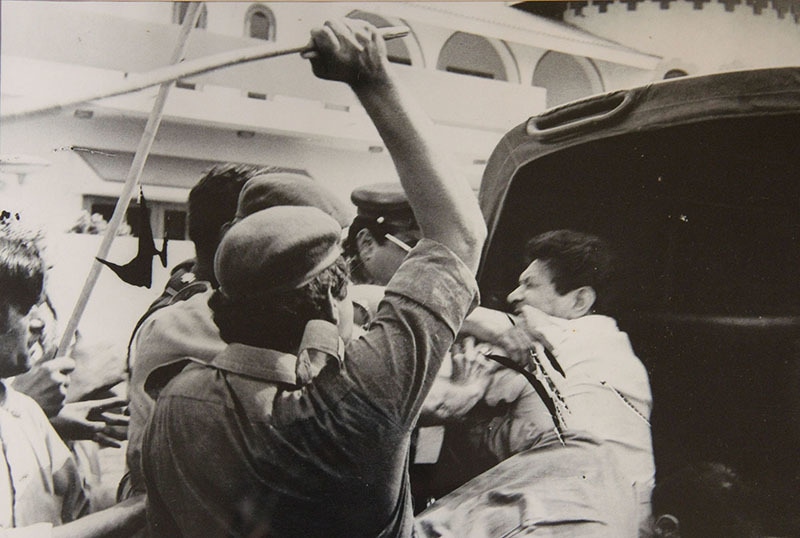
But why Sindh?
We have already discussed how Zia managed to change the political and social complexion of Punjab by initiating the gradual process of drying up the support that the PPP had enjoyed in that province.
But whereas he managed to also keep Balochistan quiet (after releasing Baloch nationalists who had been thrown in jails by the Bhutto regime); and with the Khyber Pakhtunkhwa caught-up in receiving waves of Afghan insurgents (termed as ‘guests’) and refugees (described as ‘brothers’), Sindh was largely left to its own devices.
Apart from the fact that there was already anger among the Sindhis against the hanging of a Sindhi prime minister, contributing to the violence in the province in 1983 was the feeling that Sindhis, as well as the Urdu-speakers (Mohajirs) in Karachi were being ‘invaded’ by elements that were posing a threat to their economic and political interests.
Firstly, from 1982 onwards, Karachi began receiving large numbers of Afghan refugees, some of whom came for the sole purpose of setting up illegal drug and weapons businesses in the city. This trend would go on to trigger the vicious circle of ethnic violence in Karachi from 1985 onwards.
Secondly, Zia began to allot lands in interior Sindh to Punjabis who were encouraged (by the regime) to migrate from Punjab to Sindh.
Zia did this to create a constituency for himself in Sindh. But what he received was resistance and resentment from the Sindhis and Urdu-speaking traders and members of the Sindhi landed elite.
In Karachi, Memon, Sindhi, and Urdu-speaking traders and businessmen formed an organisation called the Maha Sindh to ‘protect the interests of Sindh’s Mohajirs and Sindhis’. But this organisation was mostly centred in Karachi. It soon became an entirely Mohajir vehicle and would partly evolve into becoming the Mohajir Qaumi Movement (MQM) in 1984.
But the reaction to the regime’s manoeuvres was more violent in the interior of Sindh, where protesters turned militant and military troops had to be called in to quell the turmoil.
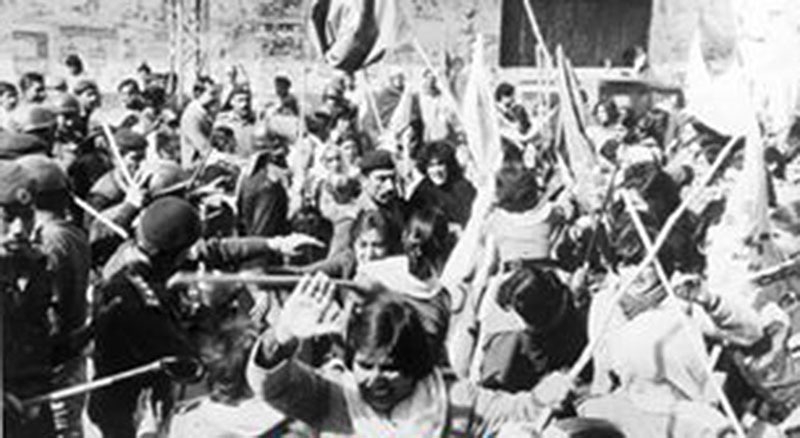
The flasher
Begun on August 14 1983, the MRD Movement had started to whirl out of control by early September, not only for the Zia dictatorship but for the main MRD leadership as well. Sindh was in serious turmoil.
In August, Sindh’s capital, Karachi (in the south), had witnessed court arrests and protest rallies on a daily basis by labour and trade unionists, student leaders and anti-Zia politicians. But in September, the focus of the movement had shifted to the central and northern parts of Sindh that got caught in a whirlpool of violence.
The MRD movement here had begun to take the shape of a Sindhi nationalist uprising bordering on an insurgency against the state.
Faced with a volley of questions (mainly from foreign journalists), Zia decided to prove that ‘only a handful of troublemakers’ were involved in the violence. He announced that he would go on a whirlwind tour of Sindh to attest that he was as popular there as he believed he was in the Punjab.
So he took off from Rawalpindi in his big military aircraft (C-130) to Sindh’s capital, Karachi.
Zia’s plane landed at the Karachi International Airport, and from Karachi, he planned to fly to Hyderabad with his posse. With him was also a crew from the state-controlled Pakistan Television (PTV) who was to cover the general’s ‘successful tour of Sindh.’
After arriving in Karachi, Zia briefly talked to a select group of journalists and reiterated his views about the situation in Sindh, insisting all was well, and that the MRD movement was the work of a handful of politicians who were ‘working against Islam, Pakistan and the country’s armed forces.’
He sounded confident about the success of his visit to the troubled spots of Sindh. This confidence was not only generated by what he was hearing from the brownnosers he had gathered around him; but also because by the time he reached Sindh’s second largest city, Hyderabad, he’d already had telephonic conversations with Sindh’s most respected nationalist leader and scholar, GM Syed.

Syed was the main architect of the historical and scholarly narrative behind Sindhi nationalism. After building a radical narrative against the so-called ‘Punjabi ruling elite,’ Syed formed the Jeeay Sindh Tehreek (JST). In 1973, he called for Sindh’s separation from Pakistan. He was promptly jailed by the ZA Bhutto regime.
Ironically, 10 years later when Sindh erupted during the MRD movement in 1983, Syed was nowhere to be seen. He had decided to stay out of the movement, a fact cleverly exploited by Zia.
See: Making of the Sindhi identity: From Shah Latif to GM Syed to Bhutto
A staunch opponent of Bhutto and his PPP, Syed, right after Bhutto was hanged in April 1979, was quoted as saying: ‘The (Punjabi) establishment doesn’t realise it has hanged its greatest asset …’
In September 1983, when journalists asked Syed why his party wasn’t taking part in the MRD Movement, he replied: ‘Zia is doing my work. His actions will force the separation of Sindh (from rest of Pakistan). That’s what I want as well. So I’ll let him do it for me.’
In another statement he said: ‘It (the MRD Movement) is a PPP-led movement and it has nothing to do with Sindhi nationalism. PPP is just trying to grab power.’
The decision to ignore the 1983 MRD Movement would eventually cost Syed his political career. Though respected as the Sindhi nation’s greatest scholar till the time of his death in 1996, Syed, however, lost his political clout when a major faction from his Jeeay Sindh Tehreek broke away and joined the movement.
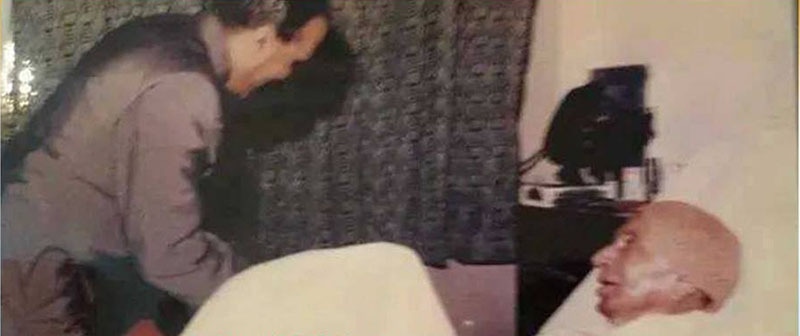
Syed’s logic behind opting not to take any part in the movement seems to be linked to his perception of the PPP as a party that was being used by the ‘Punjabi ruling elite’ to keep nationalist sentiments in Sindh at bay.
This narrative was well known by Syed’s admirers. Yet, what shocked many of them was not really the act of Syed not taking part in a PPP-led movement, but the fact that Syed was actually responding to Zia’s friendly overtures towards him.
Syed’s apologists have suggested that Syed did this to neutralise the PPP’s influence in Sindh so he could construct a Sindhi separatist movement on his own terms.
So Syed sat quietly, watching the MRD movement in Sindh fast becoming a Sindhi nationalist uprising – without him.
By September, the movement had begun to slip away from the hands of the top leadership of the PPP and of other MRD component parties. PPP chairperson, Benazir Bhutto, released a statement from her jail cell urging Punjab to rise if it wanted to save Pakistan from breaking up. She was getting nervous.

The movement was now almost entirely being navigated by the local leaders of PPP’s youth-wing; Maoist outfits such as Awami Tehreek, Qaumi Mahaz-i-Azadi and Mazdoor Kissan Party; left-wing student organizations such as the revamped Democratic Students Federation (DSF), and the breakaway faction of the Jeeay Sindh Tehreek.
Though several rallies were also taken out in Punjab’s capital city, Lahore, the province did not rise the way MRD was expecting it to.

Back in Hyderabad, Zia spoke about the inherent patriotism of all Sindhis. By this, he meant not only indigenous Sindhis, but also the Urdu-speakers (Mohajirs) and the Punjabis settled in the province (called ‘New Sindhis’).
Radical left-wing Sindhi nationalist, Rasool Baksh Palejo, scoffed at Zia’s comment.
Palejo, though not a Syed disciple, echoed Syed’s original narrative about Mohajirs. In the 1960s, Syed had accused the Urdu-speakers of coming to Sindh (as migrants from India), but behaving like those Europeans who had invaded the lands of the ‘Red Indians’ in the Americas and had treated them shabbily.
Palejo’s rebuff did not go down well with the Mohajir members of the various small left-wing parties and youth outfits that were taking part in the movement.
Aamer Zain, a young Urdu-speaking activist of the DSF in the Sindh city of Khairpur, was quoted in a pro-PPP Sindhi newspaper as saying: ‘With all due respect to Palejo Sahib, I am as much a Sindhi as he is, otherwise why would I be risking my student life, future, and everything else by taking part in this movement …?’
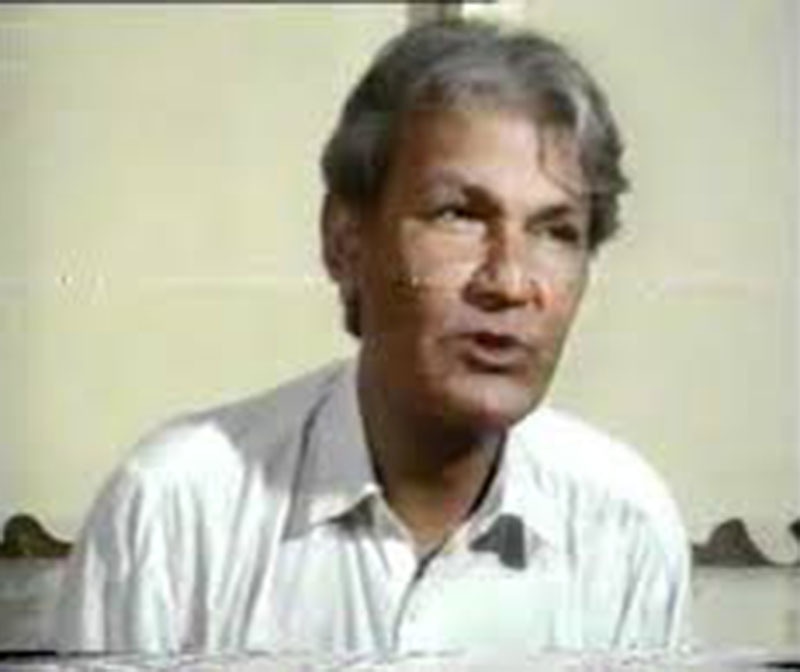
On 15th September, Zain was arrested by the police during a violent rally in the Sindh city of Nawabshah and severely tortured. After his release in 1988, he joined the MQM.
In 1983, there was no Mohajir Qaumi Movement (MQM). The Mohajir majority in Karachi and the Mohajirs in the rest of Sindh were voters and supporters of three main political parties.
The progressive Mohajirs were either associated with the PPP, or with various leftist student outfits such as the NSF. The conservative Mohajirs backed the Jamat-i-Islami (JI) and Jamiat Ulema Pakistan (JUP). After the rise of MQM in 1985, however, the majority of Mohajirs went on to become MQM aficionados. They still are.
But in 1983, there were just two tiny Mohajir nationalist organisations with not much influence. There was also the student outfit, All Pakistan Mohajir Students Organisation (APMSO), but it wasn’t as prominent as it would become after 1985. The Mohajir community largely sat out the MRD movement.

The Sindhi nationalists’ biggest grudge during the MRD movement, however, was with the Punjabi settlers. Sindhi nationalists had been accusing the Zia regime of sending and settling ambitious Punjabi traders and agriculturalists in Sindh to prop up a constituency for himself in the province.
The nationalists claimed that these settlers were taking over Sindhi businesses and jobs and siding with the pro-Zia feudal elite to repress Sindhi nationalism. One of the most prominent among these feudal leaders was Peer Pagaro.
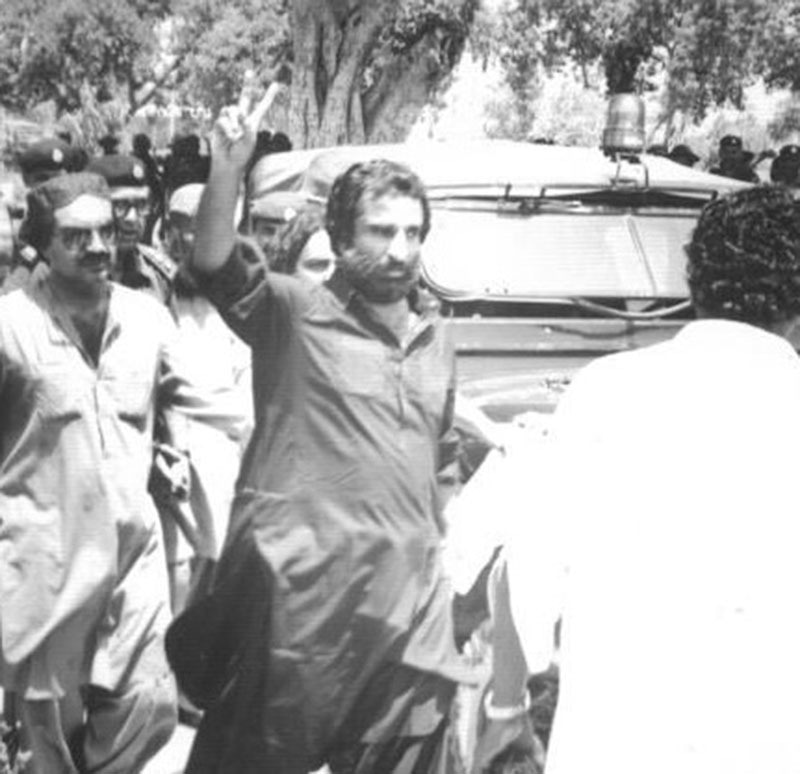
From Hyderabad, Zia began his tour of the troubled interior of the Sindh province. He particularly wanted the cameras to capture his tour of Dadu and Moro, the two cities most affected by the movement. It was decided by his security team that he would use a helicopter to fly there. His aides seemed a tad fidgety and nervous.
The thick forests around Moro and Dadu had become sanctuaries for hundreds of activists escaping Zia’s forces. Another rallying point for the activists were the many big and small shrines of Sufi saints across Sindh.
As Zia sat in the helicopter, waiting to land in Dadu, some of his security advisers shared with him his regime’s latest triumphs in the area: Hundreds of ‘troublemakers and traitors’ had been arrested and eliminated, he was told, and a plan was also afoot to flush out ‘rebels’ hiding in the shrines and the forests.
Most of Sindh’s influential peers (Sufi spiritual leaders) were opposing Zia. They had thrived during the Bhutto regime, especially the powerful Peer of Hala. So Zia contacted another influential Peer, Peer Pagaro (who was a Zia supporter), and requested him to use his influence to make the keepers of the Sufi shrines reject ‘Sindhi rebels’. Pagara tried but failed.
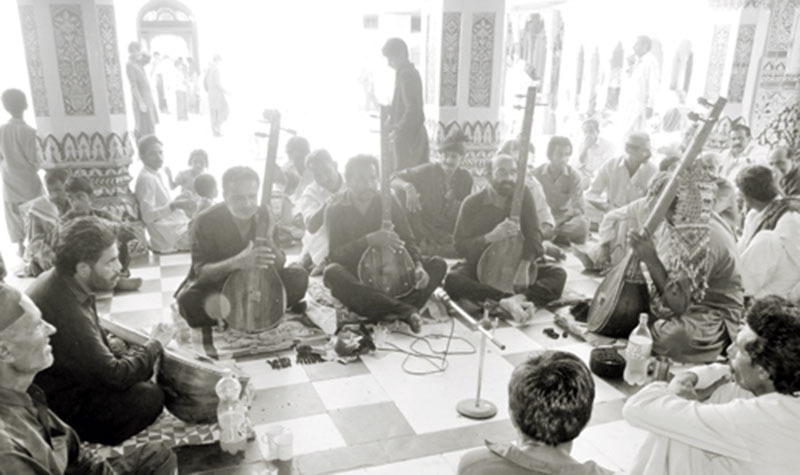
One September evening in 1983, Pakistanis watched a video clip on the state-owned PTV’s 9pm Urdu news bulletin that showed Zia descending from a helicopter and being greeted by a dozen or so smiling men in Sindhi caps. He had reached Dadu.
Viewers were told that Zia was ‘warmly greeted by patriotic Sindhis in Dadu.’
The next day, however, when Pakistanis tuned into BBC Radio’s Urdu service at 8pm, the newscaster, after detailing the nature of the day’s rallies, protest marches and violence in Sindh, also added a brief report about a more amusing episode.
This report became a topic of glee at the Karachi Press Club that was heavily involved in accommodating the journalists who were taking part in the movement.
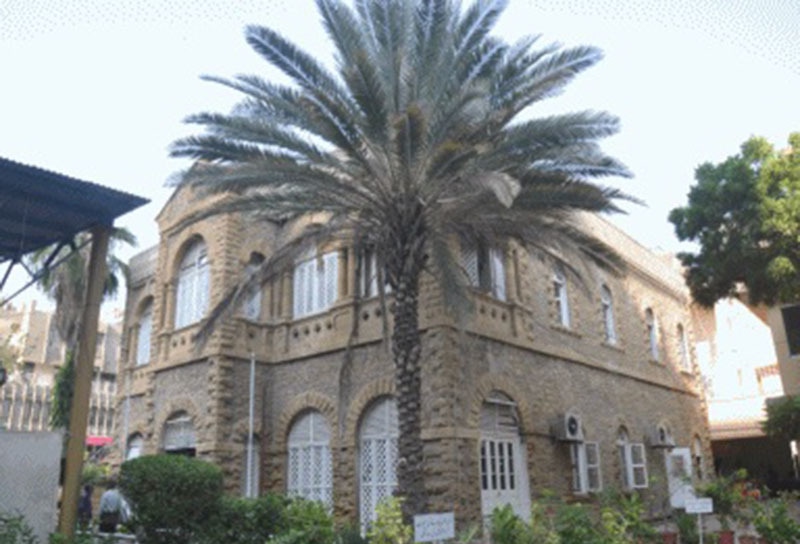
This is what happened: As Zia’s helicopter landed on a helipad in Dadu, he was greeted by a few men wearing Sindhi caps. He was then escorted towards a bulletproof limousine that was followed by jeeps carrying armed security personnel.
He was expecting the roads of Dadu to be lined up with Sindhis cheering his arrival. In fact, he was sure that his aides had done well to organise a colourful show for the TV cameras to capture.
His motorcade moved into the city on its way to a building where he was expected to speak to the press. To his satisfaction, he did find a sprinkling of people on the roadsides, holding small Pakistani flags. But then, suddenly, his speeding limo swayed to the right, closely avoiding hitting a stray dog that had appeared, as if out of nowhere.
It was no ordinary dog. It had been pushed in front of the general’s motorcade by the same small roadside crowd. On the dog’s body something (in Sindhi) was scribbled with red paint. It read: ‘Zia’
The journalists and the BBC correspondent accompanying the motorcade were not sure what Zia’s reaction to this was.
As the motorcade moved on, a donkey was seen being made to run on the edges of the scruffy Dadu road that Zia’s limo was travelling on. The poor beast was being chased by a group of small kids and on its body too, the red paint screamed Zia’s appellation.
So much for the show of pomp and popularity the President was expecting from his aides.
The general’s limo now gathered even more speed, until it came to a bumpy portion of the road. Here, it slowed down. In front of the limo was a jeep packed with police guards. The jeep came to an abrupt halt and the cops rushed out, brandishing their rifles. What happened?
A middle-aged man, hiding in a tree whose branches hung over this part of the road, had suddenly jumped down from the tree and landed (on his backside) right in front of Zia’s limo.
The man was wearing a traditional Sindhi dress that also included a dhoti (a long piece of cloth wrapped around the waist).
Before the guards could grab him, he lifted his dhoti and exposed his privates, all the while shouting (in Sindhi) ‘Bhali karey aya! Bhali kary aya!’ (Welcome! Welcome!).
He was grabbed, pulled back to one side of the road and beaten up by the guards, as Zia’s limo screeched away.
Nobody quite knows what happened to the gentleman-flasher after he was arrested. But Zia did decide to suddenly end his ‘famous’ tour of Sindh the very next day – terming it a ‘great success.’
A civil war? Not quite
Two factors prevented the movement from turning into a full-scale civil war. First was the calling in of the Pakistan Army, whose prowess was just too overwhelming to challenge by the rather anarchic and disjointed nature of the agitation.
Though the movement had been initiated by an organised alliance of anti-Zia parties, it soon swirled out of the immediate orbit of the alliance’s top leadership and began being steered by the leaders and workers of small Maoist outfits and the student-wings of the parties that were part of the MRD.
By September 1983, the movement did not have anyone piloting it from a central command point, and the violence that followed was largely triggered by spontaneous rallies and agitation organised by anti-Zia groups stationed in various cities and villages of north and central Sindh.
There was hardly any co-ordination between such groups, and no central or joint leaders. Every group followed its own particular party’s local leader who had eventually lost contact with the main MRD leadership, which was either operating from different cities, villages or towns; or had been arrested.
Though the Zia regime saw the movement as a kind of an insurgency, it really wasn’t. The bulk of the agitation constituted protest rallies. Even the rallies that turned violent, the protesters were armed with just stones and bricks.
Episodes of armed violence only took place when the police tried to enter the forests of Moro and Dadu to flush out the activists who had escaped into the woods. And even then, the armed retaliation did not come from the escapees, but by the hardened highway dacoits who already had their bases in these forests. However, over the next few years, many of the escapees were recruited by the dacoits and became notorious highway men.
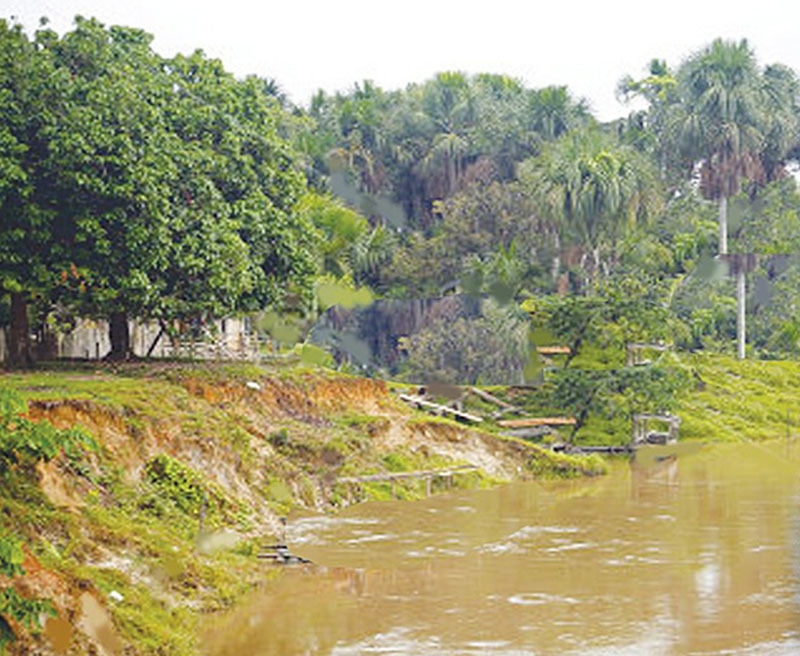
Secondly, MRD’s senior leadership too prevented the movement from turning into an all-out insurgency. The movement was originally launched to trigger nationwide protests against the regime and force Zia to resign (so fresh elections could follow).
But when the movement mutated and became a radical expression of Sindhi nationalism in Sindh, the main MRD leadership held itself back to reorient the movement (which it did in 1986).
The movement thus fell into the hands of small Maoist and militant Sindhi nationalist groups and localised student-wings of MRD parties. Not everyone was on the same page.
In 1997, an activist of the JUI (the only religious party that was part of the movement), wrote a telling account of what happened to the movement. Though the book (written in Urdu) is largely about his time in various jails of Sindh during the movement, his observations about his jail mates reflect the anarchic nature that the movement eventually took.
He was arrested in 1983 from Karachi and was locked in a tiny jail cell in Hyderabad. He was first accused of being a ‘Soviet agent’, and then of being a member of the clandestine left-wing urban guerrilla outfit, the Al-Zulfiqar.
After realising the absurdity of accusing a member of a right-wing religious party of being a communist, the police booked him for taking part in ‘anti-state activities’. He was constantly tortured, along with the young men who kept being thrown in the same jail.
His jail mates included members of the PPP’s student wing; young Sindhi nationalists; and fiery Maoists. He wrote that though they were taking part in the same movement, they often held onto each other in contempt.
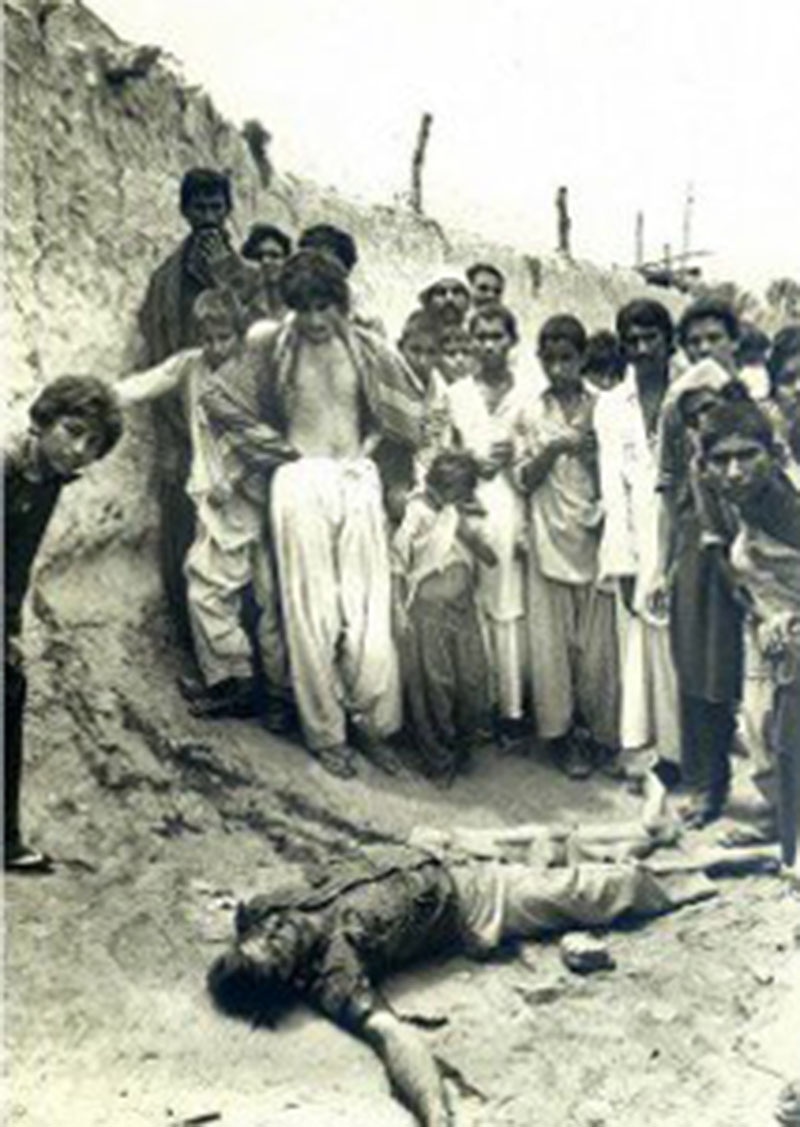
As for the flasher, the most popular theory about him is that he was a peasant in a village near Dadu who had managed to get one of his sons educated.
His son had travelled to Karachi for further studies (at the Karachi University). Here, he first joined the student-wing of the Jeeay Sindh Tehreek and then the progressive student alliance, the United Students Movement (USM).
He was arrested in 1981 after a serious episode of violence between the USM and Jamat-i-Islami’s student-wing, the IJT, erupted at the Karachi University.
He was still in a Karachi jail when his father performed the flasher stunt in September 1983. It is believed that the stunt was the idea of the Dadu chapter of the Maoist Awami Tehreek.
No one knows what happened to the man after he was arrested, but it is believed that his son was released after Zia’s demise in 1988.
